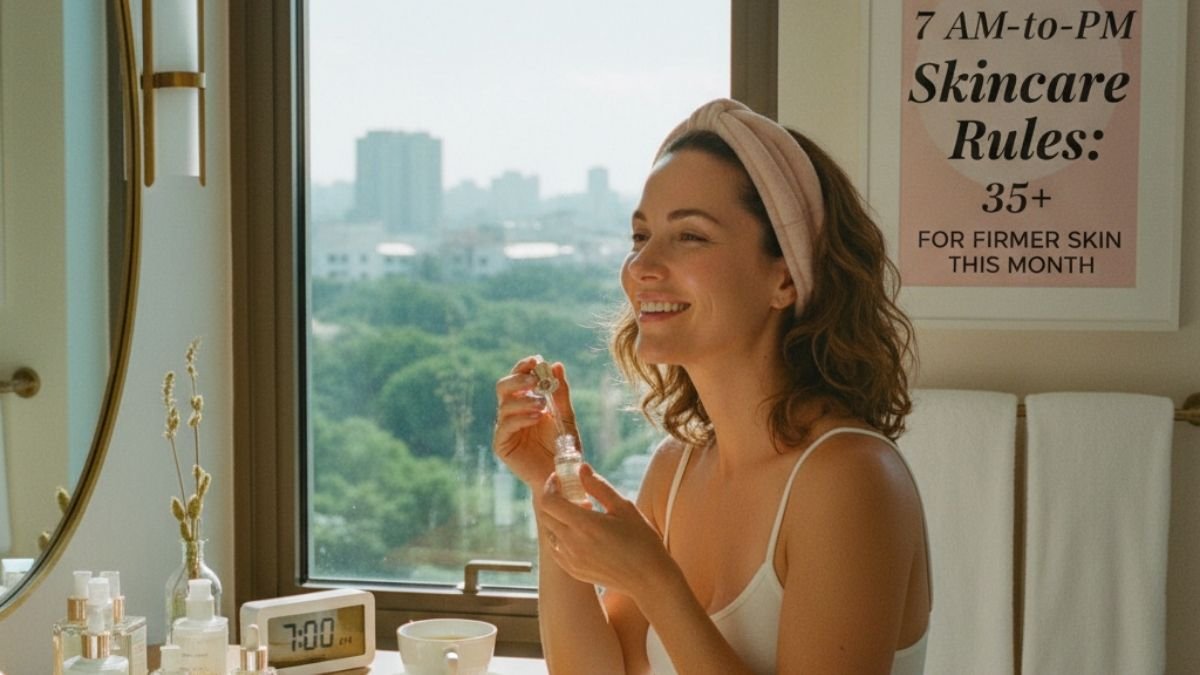
Catch your reflection in a window or a slightly-too-honest mirror, and you pause. It’s not that you look bad, not at all. It’s just… different. The bounce-back isn’t quite what it used to be. The lines that used to only show up when you laughed have decided to stick around.
If you’re feeling this, you’re not alone. And you’re not imagining it. Around 35, a very real biological shift starts to pick up speed deep within our skin. It’s not about one bad night’s sleep anymore; it’s a fundamental change in the architecture of your face. But here’s the good news: understanding what’s happening is the first step to doing something about it. This isn’t about chasing an impossible ideal of youth. It’s about working with your skin, giving it what it needs to look and feel its firmest, right now.
So, What’s Really Going On in There?
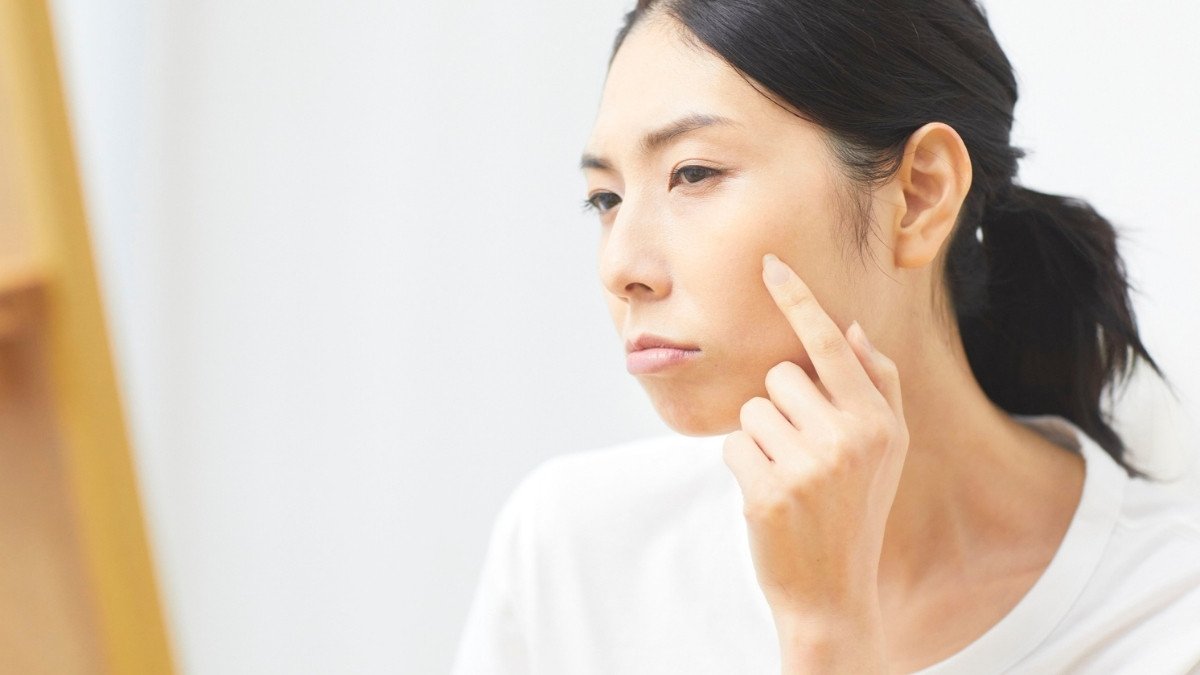
Think of your skin in your 20s as a brand-new mattress—firm, springy, and resilient. That resilience comes from a protein called collagen. It makes up about 75% of your skin’s dry weight and acts like a dense, strong scaffolding that holds everything up.
But starting in our mid-20s, we begin to lose that scaffolding at a rate of about 1% to 1.5% every single year. It’s a compounding loss, which means that by the time you hit 40, you could have up to 24% less collagen than you started with. That’s a big deal.
This isn’t just a passive decline. Environmental factors, especially the sun (which is responsible for a staggering 80% of the visible signs of aging), create these little damaging molecules called free radicals. These free radicals are like tiny demolition crews that switch on enzymes whose sole job is to chew up your existing collagen.1 This creates broken collagen fragments.
Here’s the really frustrating part: your skin’s collagen-making cells, called fibroblasts, need a taut, strong structure to work properly. When they’re sitting in a network of fragmented collagen, they get lazy. They collapse, stop making as much new collagen, and—to add insult to injury—start producing more of the collagen-destroying enzymes. It’s a vicious cycle where damage actively creates more damage.
This is why we see what we see in the mirror: the fine lines, the loss of that sharp contour along the jawline, and a texture that just isn’t as smooth as it once was. But we can absolutely intervene. It just requires a smart, consistent plan.
Rule 1: Your Morning Mission is Defense, Not Perfection
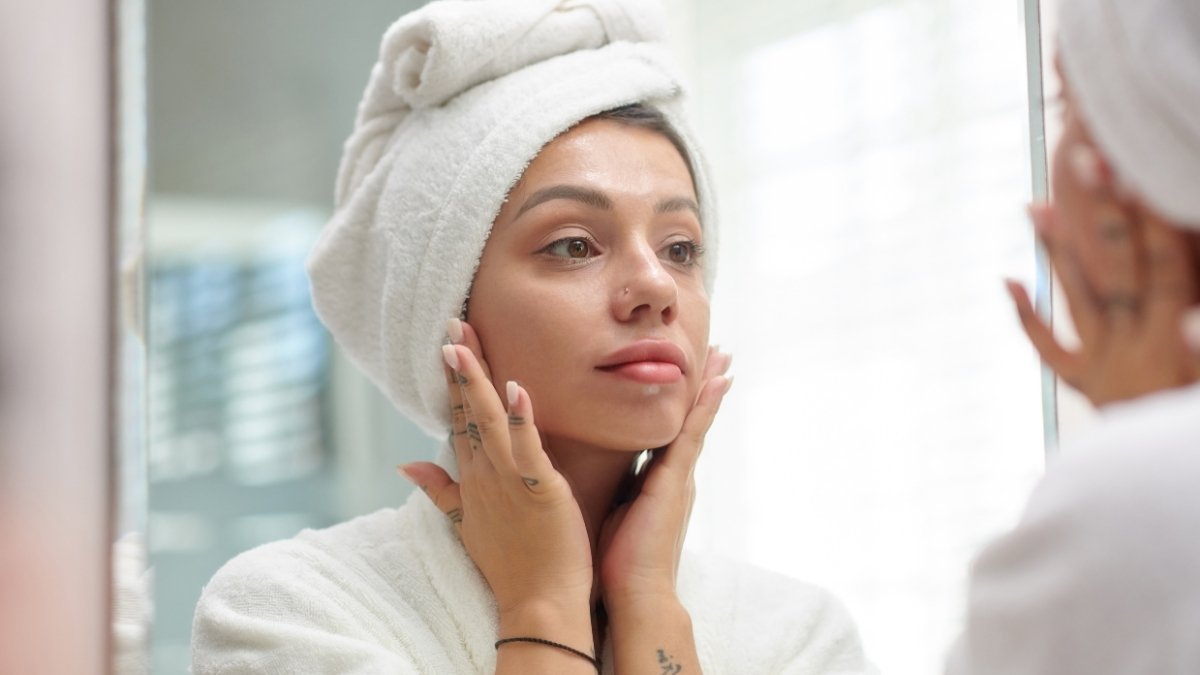
Forget those complicated 10-step morning routines you see online. Your morning job is simple: protect your skin from the daily onslaught so it has a fighting chance.
Step 1: Cleanse Gently (Or Don’t!)
Honestly, as we get older, our skin produces less oil. For many of us, a splash of lukewarm water is all we need. If you’re oily or just worked out, use a gentle, non-foaming cleanser. The last thing you want to do is strip your skin of the precious oils it has.
Step 2: Hire a Bodyguard (Vitamin C)
This is your first real line of defense. A good Vitamin C serum is like a personal bodyguard for your skin cells. It runs around all day neutralizing those free radicals from the sun and pollution before they can start the collagen-destroying cascade. But it’s also a multitasker. Vitamin C is a critical ingredient your body needs to actually build new collagen. As board-certified dermatologist Dr. Karynne Duncan says, “Vitamin C is one of the few skincare ingredients with substantial scientific evidence supporting its multiple benefits. The antioxidant protection it provides helps shield skin from environmental aggressors… while simultaneously working to correct existing damage through… collagen stimulation”.
Step 3: Hydrate, Hydrate, Hydrate

Next, a moisturizer with ingredients like hyaluronic acid or glycerin. Think of these as tiny sponges that pull water into your skin, giving you an immediate plumping effect that softens fine lines. This isn’t just for looks; a hydrated skin barrier is a stronger, more resilient barrier.
Step 4: Put Up the Riot Shield (Sunscreen)
If you do nothing else, do this. Sunscreen is the single most important anti-aging product you can use, period. Over 90% of the visible changes we call “aging” are caused by the sun. You need a broad-spectrum sunscreen with at least SPF 30, and you need to wear it every single day. Rain or shine. Indoors or out (UVA rays come right through windows). Reapply it every two hours if you’re outside. It’s non-negotiable.
Think of Vitamin C and sunscreen as a team. Sunscreen is the shield, blocking most of the damage. Vitamin C is the cleanup crew, neutralizing the few rays that sneak past. Together, they’re your ultimate defense.
Rule 2: Nighttime is When the Real Work Begins

If the morning is for defense, the evening is for offense. At night, your skin is in repair mode, away from the sun and pollution. This is your window of opportunity to use the heavy hitters that actively rebuild and resurface your skin.
Step 1: Get It All Off
You have to wash your face at night. No excuses. You need to remove the day’s makeup, sunscreen, grime, and pollution so your treatment products can actually penetrate and do their job. If you wear a lot of makeup, consider a double cleanse: start with an oil-based cleanser to melt everything off, then follow up with your gentle cleanser.
Step 2: Call in the Gold Standard (Retinoids)
This is it. If there is one ingredient that is scientifically proven to make a real, structural difference in your skin, it’s a retinoid. A derivative of Vitamin A, retinoids are the most studied and validated topical treatment for reversing the signs of aging.
They work by literally telling your skin cells to behave like younger, healthier versions of themselves. They speed up cell turnover, which smooths texture and fades dark spots, and more importantly, they kick your lazy fibroblasts into high gear to produce new, healthy collagen.
But the world of retinoids can be confusing. Dermatologist Dr. Shereene Idriss breaks it down into a ladder of strength.
- Retinyl Esters: The gentlest starting point for super sensitive skin.
- Retinol: The most common over-the-counter version. A fantastic place to start.
- Retinal (Retinaldehyde): A step up from retinol. More powerful, but often less irritating than the prescription stuff.
- Retinoic Acid (Tretinoin): The prescription-strength big gun. The most effective, but also the most likely to irritate.
The “Low and Slow” Mantra
The secret to success with retinoids is what Dr. Idriss calls “consistency over intensity”. The goal is not to turn into a red, flaky mess. Chronic inflammation actually ages your skin faster. The goal is to find the strongest retinoid you can use consistently without freaking your skin out.
Start with a lower strength, like retinol, just two or three nights a week. Use only a pea-sized amount for your whole face. After a few weeks, if your skin is happy, add another night. It might take months to work up to nightly use, and that’s okay. If you have sensitive skin, try the “sandwich method”: moisturizer, wait a few minutes, retinoid, then more moisturizer on top. It acts as a buffer to reduce irritation.
Step 3: Support and Soothe
Always, always follow your retinoid with a good moisturizer. Retinoids can be drying, and a nourishing cream with ingredients like ceramides or niacinamide will support your skin barrier and make the whole process much more tolerable.
Rule 3: Send in the Messengers (a.k.a. Peptides)

If retinoids are the factory foreman shouting orders to build more collagen, peptides are the specific memos telling the workers exactly what to do. They are short chains of amino acids that act as little messengers in the skin.
When you apply a peptide serum, your skin essentially thinks, “Oh, I see these protein fragments, there must have been some damage here. Time to initiate repair mode!” This tricks your fibroblasts into ramping up collagen production.
There are a few different kinds:
- Signal Peptides: These are the most important for firming. They directly tell your cells to make more collagen and elastin.
- Carrier Peptides: These deliver trace minerals like copper, which are essential for the collagen-building process.
- Neurotransmitter-Inhibiting Peptides: Sometimes called “Botox in a bottle,” these can help soften expression lines by subtly relaxing facial muscles.
Peptide serums are generally very gentle and can be used morning and night, layered before your moisturizer. Using them in the same routine as a retinoid creates a powerful one-two punch: the retinoid turns on the collagen factory, and the peptides provide the specific blueprints for what to build. And people see results—one study on a multi-peptide serum found that 75% of users were satisfied with their skin’s appearance, noting visible improvements in elasticity and smoothness after just 28 days.
Rule 4: Think Plump, Not Just Moist

Hydration after 35 is about more than just getting rid of dry flakes. It’s a core strategy for firmness. Youthful skin is plump because it’s packed with a molecule called Hyaluronic Acid (HA), which can hold up to 1,000 times its weight in water. As we age, our natural HA levels plummet, and our skin literally starts to deflate, making lines and sagging look more obvious.
Using a serum with Hyaluronic Acid is like re-inflating the mattress. It pulls moisture into the top layers of your skin, giving an immediate plumping effect that makes everything look smoother and firmer.
And this isn’t just a temporary cosmetic trick. The science backs it up.
- One clinical study on a topical HA serum showed a massive 134% immediate increase in hydration.
- After six weeks, users saw a 60% improvement in plumping, a 31% improvement in fine lines, and a 14% improvement in deeper wrinkles.
- Even taking it as a supplement can work. One trial found that an oral HA supplement boosted skin elasticity and firmness by 5.1% and cut wrinkle depth by 18.8% in just one month.
By the way, let’s bust a myth. You can’t drink your way to hydrated skin. While staying hydrated is great for your overall health, that “8 glasses a day” rule won’t fix a compromised skin barrier. That’s a job for your skincare
Rule 5: Gently Clear the Way
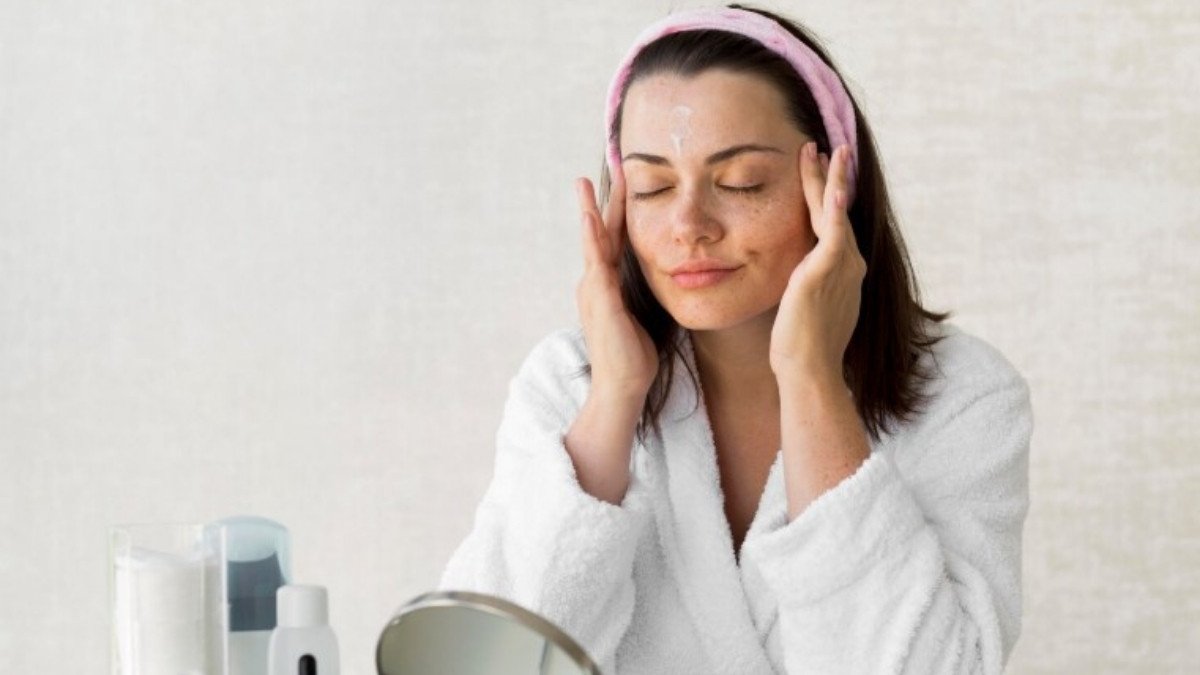
Remember how your skin cell turnover slows down with age? Think of it like a traffic jam on the surface of your skin. A layer of old, dead cells builds up, making your complexion look dull and rough. Worse, that layer acts like a roadblock, preventing your expensive serums from actually getting to where they need to go
This is where exfoliation comes in, but we need to be smart about it. Please, step away from the harsh, gritty scrubs. They can create micro-tears in your skin, leading to irritation and inflammation—the exact opposite of what we want.
The smarter choice is a chemical exfoliant, like an Alpha Hydroxy Acid (AHA). Ingredients like glycolic or lactic acid work by gently dissolving the “glue” holding those dead cells together, letting them shed evenly. This instantly brightens your skin and, more importantly, clears the path for your retinoids and peptides to penetrate more effectively. It makes every other product in your routine work harder.
Use an AHA one to three times a week, on a night you’re not using your retinoid, to avoid overdoing it. And be extra vigilant with your sunscreen the next day, as your skin will be a little more sensitive to the sun.
Rule 6: Your Skin Is a Reflection of Your Life
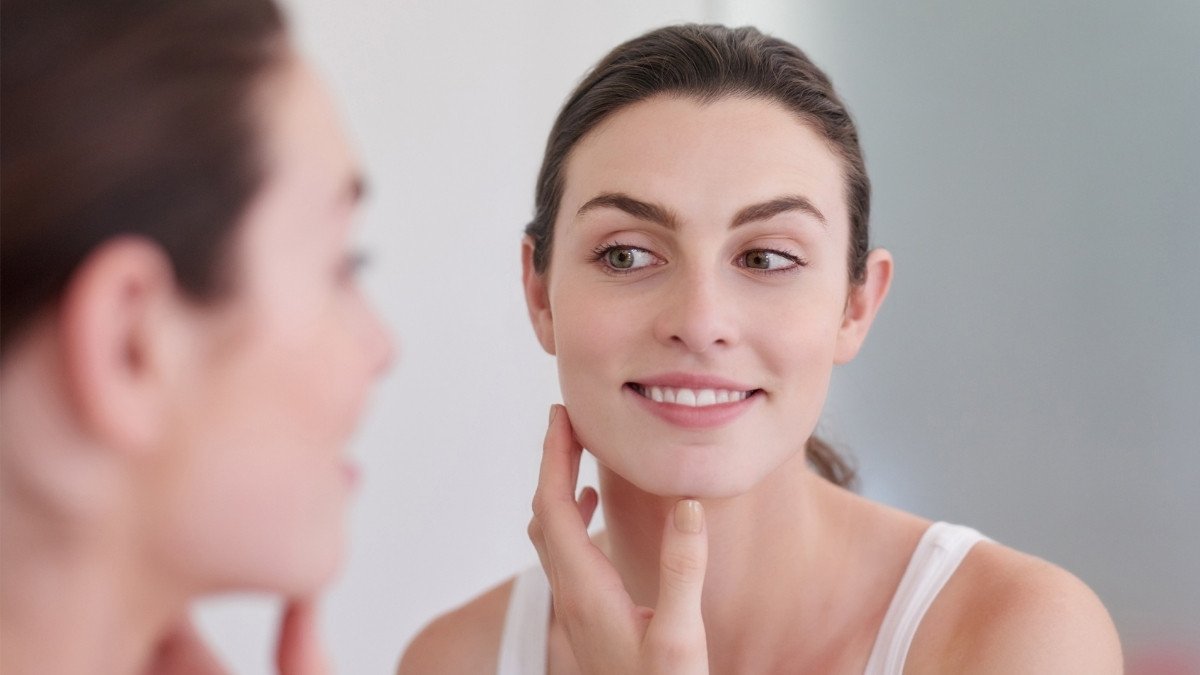
You can have the best skincare products in the world, but if you’re running on stress, poor sleep, and a diet of sugar and caffeine, you’re fighting an uphill battle. Your skin is an organ, and it reflects your internal health. As dermatologist Dr. Howard Murad wisely said, “Skincare is not superficial because it is healthcare. When you have beautiful skin, it is a sign that you have a healthy body and mind”.
- Stress: Chronic stress floods your body with the hormone cortisol, which directly breaks down collagen and compromises your skin barrier. Finding ways to manage stress—whether it’s a walk, meditation, or just five minutes of deep breathing—is a legitimate skincare step.
- Sleep: This is when your body’s repair crew is most active. Getting 7 to 9 hours of quality sleep is non-negotiable for collagen repair.
- Nutrition: A diet high in sugar can cause a process called glycation, where sugar molecules attach to your collagen fibers, making them stiff and brittle. On the flip side, foods rich in antioxidants (like berries), Vitamin C (citrus fruits), and healthy fats (like salmon and avocados) give your skin the raw materials it needs to stay strong.
- The Big No’s: We all know this, but it bears repeating. Smoking is catastrophic for skin, restricting blood flow and unleashing a firestorm of free radicals. Excessive alcohol is incredibly dehydrating, making every line and wrinkle look more pronounced.
Need a Little Help Getting Started?
Okay, that was a lot of information. And knowing what to do is one thing, but navigating the endless aisles of products is another. It can be overwhelming. To make it a little easier, here are a few well-loved, effective, and accessible products that align with the principles we’ve talked about. Think of these as a solid starting point.
1. For Your Morning Antioxidant Shield: CeraVe Skin Renewing Vitamin C Serum

This is a great, gentle way to get your daily dose of Vitamin C. It uses 10% pure L-ascorbic acid to brighten and protect, but it’s also formulated with ceramides and hyaluronic acid, so it helps support your skin barrier instead of irritating it. It’s a fantastic and affordable workhorse for your morning routine.
2. For Your Nightly Repair Work: RoC Retinol Correxion Deep Wrinkle Night Cream

RoC is a drugstore legend for a reason—their retinol products work. This night cream is a perfect entry point into the world of retinoids. It’s clinically proven to visibly reduce lines and wrinkles over time and is formulated to be effective without being overly harsh. It’s a classic for a reason.
3. For Sending in the Messengers: The Ordinary Multi-Peptide + HA Serum

If you want to add peptides without breaking the bank, this is the one. It’s packed with a variety of well-studied peptides designed to target multiple signs of aging, including firmness and crow’s feet. The “HA” means it also includes hyaluronic acid for an extra plumping and hydration boost.
4. For That Essential Plumpness: CeraVe Hydrating Hyaluronic Acid Serum

Another fantastic, no-fuss option from a dermatologist-developed brand. This serum delivers much-needed hydration with hyaluronic acid and helps lock it in with essential ceramides. It layers beautifully under other products and gives your skin that immediate, dewy, hydrated feeling we’re all after.
5. For Your Non-Negotiable Daily Protection: EltaMD UV Clear Facial Sunscreen

Ask any dermatologist for their favorite sunscreen, and there’s a good chance they’ll say this one. It’s a broad-spectrum SPF 46 that’s incredibly lightweight, doesn’t leave a white cast, and is formulated with niacinamide, which helps calm the skin. It’s a bestseller for a reason and the most important final step in your morning routine.
Rule 7: Play the Long Game. Seriously.
This might be the most important rule of all. We live in a world of instant gratification, but your skin operates on a biological timeline, not an Amazon Prime one. You have to be patient and consistent.
Here’s a realistic timeline for what you can expect:
- Immediately to 2 Weeks: You’ll notice better hydration. Your skin will feel plumper and look dewier, thanks to ingredients like hyaluronic acid.
- 4 to 8 Weeks: Your skin tone and texture will start to improve. It will look brighter and feel smoother as the Vitamin C and exfoliants do their work.
- 3 to 6 Months (and beyond): This is when the real structural change happens. It takes at least this long for your skin to clear out old, damaged collagen and build up a significant amount of new, healthy collagen. This is when you’ll start to see a real reduction in fine lines and a noticeable improvement in firmness from your retinoids and peptides.
Knowing this timeline helps you stick with it when you don’t see “miracle” results in 30 days. Remember Dr. Idriss’s mantra: consistency over intensity. Showing up for your skin every morning and every night is what creates the change.
And finally, don’t get sidetracked by myths.
- Myth: Expensive products are always better. Reality: It’s the ingredients and the formulation that matter, not the price tag.
- Myth: You can get a “facelift in a bottle.” Reality: Skincare can make a huge improvement, but it can’t replicate surgery.
- Myth: “Natural” is always safer. Reality: “Natural” is an unregulated marketing term. Poison ivy is natural. Science-backed ingredients are what count.
Embracing this process isn’t about fighting aging. It’s about partnering with your skin for the long haul. It’s a practice of care and consistency that pays off, not just in how you look, but in how you feel in your own skin—strong, healthy, and vital.






